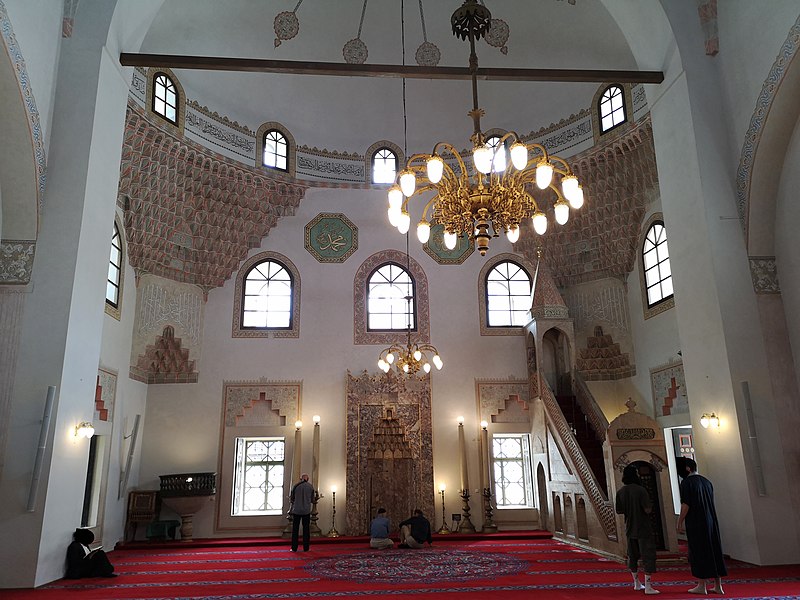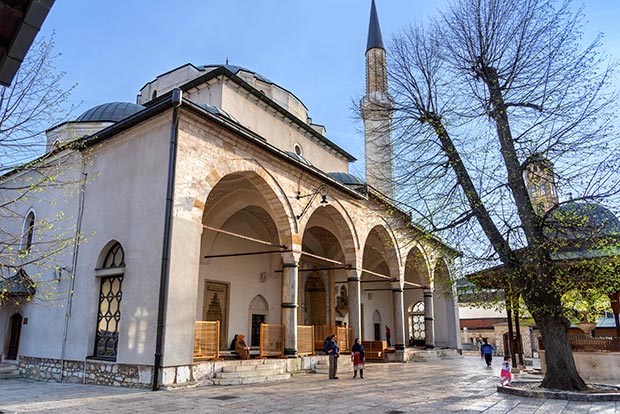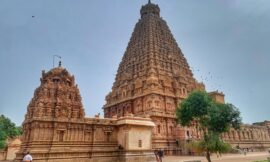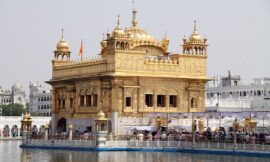The Gazi Husrev-beg Mosque, located in the heart of Baščaršija, the historic district of Sarajevo, is one of the most significant and beautiful mosques in Bosnia and Herzegovina. Named after its founder, Gazi Husrev-beg, a prominent Ottoman governor and military leader, the mosque is a masterpiece of Islamic architecture and a symbol of Sarajevo’s rich cultural and religious heritage.

Constructed in the 16th century during the height of the Ottoman Empire, the Gazi Husrev-beg Mosque was commissioned by Gazi Husrev-beg himself as part of his efforts to promote Islam and establish Sarajevo as a center of Islamic learning and culture. Designed by the renowned Ottoman architect Adžem Esir Ali, the mosque is characterized by its elegant proportions, intricate geometric patterns, and stunning arabesque decorations.

The mosque’s architecture reflects the classical Ottoman style, with a central dome supported by four slender minarets and a spacious prayer hall adorned with intricate stonework and colorful tile mosaics. The interior of the mosque is equally impressive, featuring a mihrab (prayer niche) adorned with ornate calligraphy, a beautifully carved wooden minbar (pulpit), and a dome decorated with intricate floral motifs and geometric patterns.
One of the most striking features of the Gazi Husrev-beg Mosque is its expansive courtyard, which provides a tranquil oasis amidst the bustling streets of Baščaršija. Lined with lush greenery, bubbling fountains, and intricate stone carvings, the courtyard is a popular gathering place for worshippers and visitors alike, offering a peaceful retreat where one can reflect and contemplate.
In addition to its architectural beauty, the Gazi Husrev-beg Mosque holds immense religious and cultural significance for the people of Sarajevo and Bosnia and Herzegovina. As one of the oldest and most important mosques in the country, it serves as a focal point of religious life and a symbol of Islamic identity for the local Muslim community.
The mosque is also closely associated with Gazi Husrev-beg himself, who is revered as a hero and patron saint in Bosnian history. Known for his piety, generosity, and devotion to Islam, Gazi Husrev-beg played a pivotal role in the development of Sarajevo and left a lasting legacy that continues to be celebrated to this day.
In addition to its religious functions, the Gazi Husrev-beg Mosque is also a popular tourist attraction and cultural landmark, attracting visitors from around the world who come to admire its stunning architecture, learn about its rich history, and experience the vibrant atmosphere of Baščaršija.
In conclusion, the Gazi Husrev-beg Mosque stands as a testament to Sarajevo’s rich cultural and religious heritage, reflecting the city’s diverse history and the enduring legacy of its Ottoman past. With its magnificent architecture, spiritual significance, and central location in the heart of Baščaršija, the mosque continues to be a source of inspiration and pride for the people of Sarajevo and a symbol of tolerance, unity, and peace.



